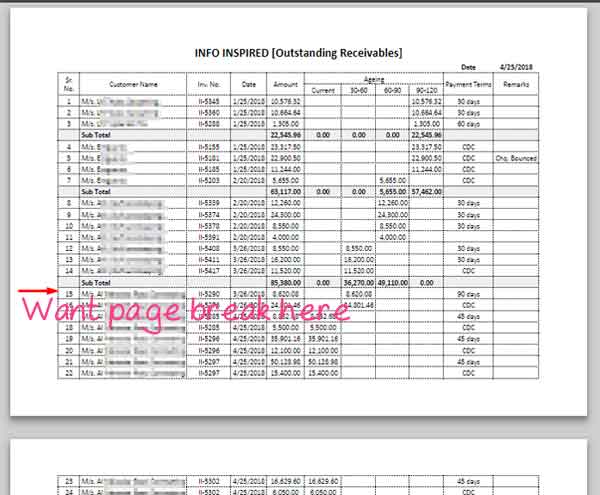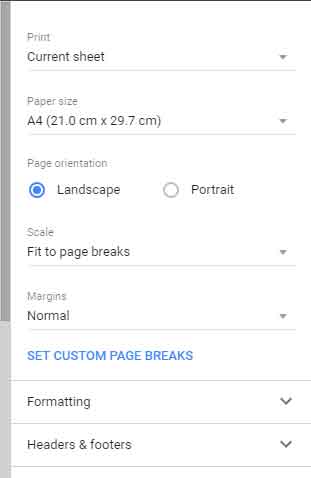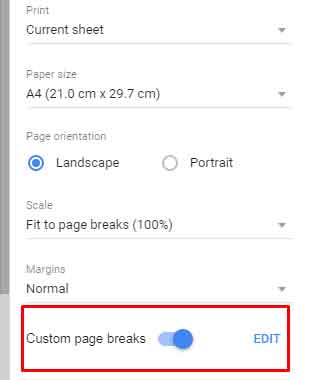In this tutorial, you’ll learn how to insert custom page breaks in Google Sheets. This feature is a game-changer for users who frequently print spreadsheets and require well-organized, professional-looking outputs.
Page breaks ensure that related rows or groups of data are printed together, avoiding awkward splits across pages. This improves readability and professionalism in printed spreadsheets. Here’s an example:

When using the universal shortcut Ctrl+P (Windows) or Command+P (Mac) to print in Google Sheets, the software automatically determines page breaks based on the paper size and content. However, this can often result in unintended row groupings, disrupting the data presentation.
For instance, a group total might appear at the bottom of one page, while its corresponding data spills onto the next page. Setting custom page breaks allows you to avoid such issues, ensuring logical grouping for easy understanding.
How Did Users Manage Page Breaks in the Past?
Before the introduction of this feature, users relied on inserting blank rows directly into the spreadsheet to push data onto the next page. While this workaround achieved the desired print layout, it often disrupted data integrity, caused formula errors, and was cumbersome to maintain.
Now, custom page breaks eliminate this need, preserving your data structure while providing flexibility in printing.
Step-by-Step Guide to Insert Page Breaks in Google Sheets
Follow these simple steps to insert page breaks in Google Sheets:
- Open Print Settings
Go to the menu File > Print or press Ctrl+P (Windows) or Command+P (Mac). - Access Custom Page Breaks
On the print settings screen, click the SET CUSTOM PAGE BREAKS button on the right-hand side.
- Adjust Page Breaks
- Blue dotted lines represent default page breaks.
- Hover over a dotted line, and it will turn into a thick dark line.
- Drag the line to your desired position and release it.

- Confirm Changes
Click the CONFIRM BREAKS button to finalize the custom page breaks.
You can repeat this process to add multiple page breaks, ensuring your print layout meets your needs.
How to Reset or Edit Page Breaks in Google Sheets
If you need to modify or remove custom page breaks, follow these steps:
- Reopen Print Settings
Go to File > Print. - Edit Page Breaks
Click the Edit button to adjust existing page breaks or reset them entirely.
- Reset All Page Breaks
Use the reset option to revert to default page breaks. Alternatively, drag the blue slider to turn off custom page breaks.
Conclusion
The ability to insert and customize page breaks enhances the functionality of Google Sheets, making it a more comprehensive spreadsheet solution. Features like custom page breaks and Google Forms integration, combined with powerful functions such as QUERY, SORTN, FILTER, REGEXMATCH, and IMPORTRANGE, position Google Sheets as a top contender in the market. Additionally, it’s free and enables multiple users to collaborate in real-time from different locations.
Whether you’re preparing a detailed report or a simple data table, understanding how to insert and edit custom page breaks will help you create well-organized, professional prints every time.
Before concluding, one final note: Google Sheets still has room for improvement when it comes to page breaks. Currently, page breaks can only be inserted and adjusted in the print settings screen, not directly within the sheet (grid).






















I have a spreadsheet containing around 400 lines. Doing the Page break using this method is very time-consuming and dragging the lines down several pages is laborious, to say the least. It would be nice to be able to put the page break in the spreadsheet itself.